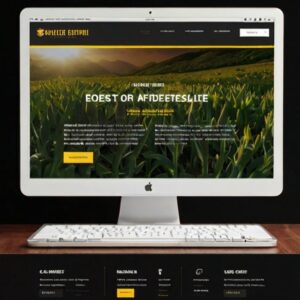In SEO, understanding and implementing Google’s E-A-T (Expertise, Authoritativeness, Trustworthiness) guidelines is crucial for achieving superior search engine rankings. With these standards, Google aims to ensure that users receive content from sources that are credible and provide substantial value.
Understanding E-A-T and Its Importance

E-A-T, which stands for Expertise, Authoritativeness, and Trustworthiness, important in Google’s Search algorithm, particularly when determining the quality and ranking of web content. Expertise necessitates that the content creator or author possesses profound knowledge and proficiency in a specific field, which is usually demonstrated through professional experience, relevant educational background, or a well-established track record of writings in the subject area. Authoritativeness goes a step further by considering the personal expertise of the content’s creator and the overall reputation of the website where the content is published. It involves recognition from other reputable figures in the field and authoritative sites, which often manifests through citations, backlinks, or endorsements. Trustworthiness, the third pillar of E-A-T, hinges on the credibility and reliability of both the content and the website on which it appears. This includes accurate factual information, transparency about authorship and site ownership, and secure domain connections (https).
These components are especially critical for YMYL (Your Money Your Life) pages, where content accuracy and integrity can significantly influence reader decisions with potential impacts on health, financial stability, or safety. Consequently, Google emphasizes stronger E-A-T standards for such websites to protect users from misinformation and harmful advice. But the importance of E-A-T extends beyond YMYL topics, affecting the entire spectrum of content since users increasingly value trust and factual accuracy in the information they consume online. As internet literacy grows, so does the public awareness about discerning credible sources, making E-A-T a significant benchmark for evaluating and improving the quality of web content across all categories. This evolution reflects a broader shift to more responsible and user-centric content curation on the part of search engines and site administrators alike.
Amplifying Expertise in Your Content
Enhancing the visible expertise in your content begins with the creator. Individuals with verifiable qualifications or a record of professional experience in a specific industry should be at the forefront of content creation. Here are ways to amplify your level of expertise:
Practical, include a brief author biography with pertinent qualifications, experiences, and achievements that directly relate to the topic. This not only builds trust with your audience but also reinforces the relevance of the information.
Publications that cover topics comprehensively tend to demonstrate higher expertise. Use well-researched data and statistics, cite recent studies, and provide detailed analyses that address multiple facets of the subject at hand.
Fields of study are continually evolving. Consistently updating your content to reflect the latest research, trends, and best practices can help maintain its accuracy and relevance, which boosts perceived expertise.
Establishing Authoritativeness
Authoritativeness extends beyond the individual to the entire domain. A site’s authority is often gauged by its reputation among peers and how widely it is recognized as a important source of information. Strengthening your site’s authoritativeness involves several strategic actions:
- Quality Backlinks: earning backlinks from prestigious sites not only drives direct traffic but also enhances your site’s authority. Collaborate with reputable figures and platforms within your niche to create guest posts or joint research initiatives.
- Engagement Through Social Proof: positive reviews, testimonials, and endorsements can significantly strengthen authority. encourage satisfied clients or customers to share their experiences on your platform and third-party review sites.
- Participation in Industry Discussions: be active in relevant forums, conferences, and workshops. This visibility, especially when combined with insightful discourse, boosts recognition and respect among industry peers.
Cultivating Trustworthiness
A site that users find reliable tends to keep visitors engaged for longer periods and fosters more interaction, which in turn signals to search engines the trustworthiness of the platform. To build this important component, a concentrated effort on transparency and user security is necessary. Firstly, securing the website is essential; implementing SSL certificates provides a secure connection, while displaying trust seals and certifications can reassure visitors about the safety of their data. Additionally, making contact information readily available, such as a physical address, phone number, and email address, can foster trust by demonstrating legitimate ways to resolve issues or make inquiries. It is also vital to provide quality content, which involves avoiding misleading headlines and ensuring the content delivers what it promises. The accuracy of the information and attention to spelling and grammar contribute significantly to user trust. Having a user-friendly design enhances the experience for visitors. A well-designed, easy-to-navigate website that responds well and loads quickly helps build confidence in your content and establishes a trustworthy digital environment.
The Role of Content in E-A-T
Content is the vehicle through which expertise, authoritativeness, and trustworthiness are communicated. Developing content strategies that align with E-A-T principles is essential. Focus on creating content that answers users’ questions comprehensively and provides unique insights. Employ a variety of content types, such as videos, infographics, in-depth articles, and case studies, to cater to different learning preferences and engagement levels.
Semantic richness and context are also vital. Use relevant keywords naturally and judiciously. Contextually rich content helps search engines understand and classify the information more effectively, which can enhance visibility in search results.
Measuring E-A-T’s Impact
Assessing the impact of your E-A-T efforts is more qualitative than quantitative. Metrics such as increased organic traffic, longer dwell times, higher click-through rates from SERPs, and improved conversion rates suggest effective implementation. Regularly monitor these indicators alongside receiving feedback through user comments and engagement levels to gauge and refine your SEO strategy.
By diligently applying these detailed practices within the framework of E-A-T, businesses and creators can elevate their SEO, but most importantly, deliver valuable, reliable content to their audiences. As Google continues to refine its focus on quality, mastering E-A-T is about improving rankings and thriving in a user-first online environment.
